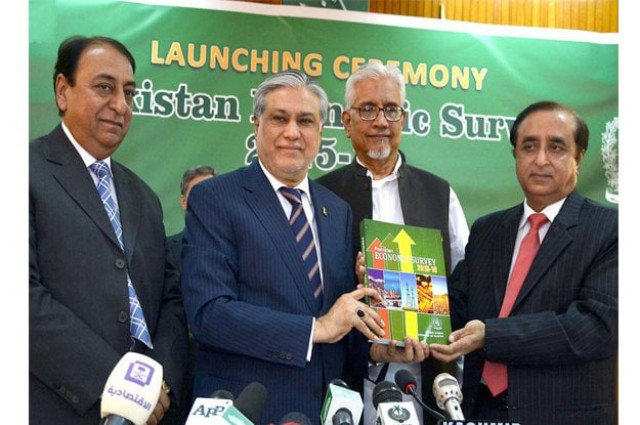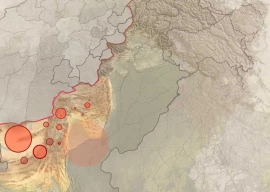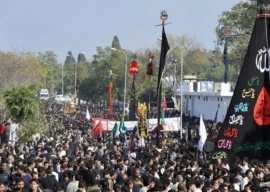
On Thursday, Finance Minister Ishaq Dar unveiled the synopsis of the government’s economic performance, revealing the Gross Domestic Product (GDP) growth fell way short of the 5.5% target, owing to major setbacks in the agriculture sector.
Agriculture, which contributes 21% to the total national output and is the largest employer, has apparently collapsed as it was never on the radar of the ‘pro-business’ PML-N government.
The government also failed to achieve its key targets on growth, investment and savings. Exports also fell for the third consecutive year while the country’s public debt grew by a double-digit figure. However, per capita income marginally increased to $1,560.7.

“The economy grew at a pace of 4.7%, which was lower than the target, due to contraction in the agriculture sector,” announced Dar while launching the Economic Survey of Pakistan 2015-16 booklet.
In some areas, the performance appeared better than the previous fiscal year, suggesting the government has managed to give a sense of economic stabilisation.
Dar said the government no more needed the International Monetary Fund and it would focus on growth in the next financial year.
He added that growth in construction, electricity generation and banking sectors was impressive.
But even the 4.7% growth is deceiving. The services sector, which is not a job-intensive division, contributed about 71% in the national output. So there is a dichotomy between the growth and unemployment figure.
Dar ducked a question on this dichotomy. He said the unemployment rate dropped to 5.9%, which, according to experts, is not consistent with the growth rate.
Pakistan needs over 6% to 7% annual growth rate to absorb new entrants in the job market and any rate below this would increase the number of jobless people.
“Had the production of cotton crop not drastically fallen, the government would have come closer to achieving its 5.5% growth target,” believed the finance minister, vowing to focus on agriculture and exports in the next year. “No sector can be ignored for achieving the goal of sustainable growth.”
Scepticism also remains over the authenticity of the figures released by Dar because of serious credibility issues facing the Pakistan Bureau of Statistics – the national data collection agency, which works out most of these statistics.
Some achievements
As the financial year draws to a close on June 30, inflation will remain around 3% – far below the anticipated rate owing to reduced commodity prices.
Dar said the rupee also remained stable against the US dollar, helping to curtail the inflationary expectations.
The government, he added, was well-positioned to achieve this year’s budget deficit target of 4.3% of GDP. He hoped the FBR would also achieve its annual tax collection target of Rs3.104 trillion, for the first time in years.
Dar said the stock market was buoyant and current account deficit was within “manageable limits”. He added the official foreign currency reserves were at a historical high of $16.8 billion and foreign remittances were still growing.
Foreign direct investment also slightly improved to $1 billion but was still far lower than the level needed. Pakistan Stock Exchange benchmark 100-index increased to 36,266 points as of May 11.
Missed targets
The investment-to-GDP ratio slipped to 15.2% against the target of 17.7%. The ratio was lower than even last year’s revised rate of 15.5%. Savings remained almost stagnant at 14.5% of GDP, shy of the target of 16.8%.
Fixed investment also decreased to 13.6% of GDP against the target of 16.1%. It was 0.3% down from the last year’s level. Public investment remained at 3.8% of GDP, below the target of 4%.
Agriculture
For the first time in 15 years, the agriculture sector contracted by 0.19% as opposed to the 3.9% target set by the government. The sector’s contribution to GDP shrank to 20.5%.
The ruling party has been accused of ignoring this sector, which employs close to 37% of Pakistan’s labour force.
Production of both major and minor crops, cotton ginning and livestock declined. Only forestry and fishing sector grew in the agriculture sector. Cotton production declined to 10.1 million bales – as much as 27.8% less than the last crop. Wheat production grew marginally.
Industries & services
While the government achieved the industrial growth output target of 6.8%, large-scale manufacturing stood at 4.6%, well below the official target. Small-scale manufacturing grew to 8.2%, slaughtering sector 3.6%, electricity generation and distribution 12.1%, mining and quarrying 6.8%, and construction grew to 13%.
The services sector, which accounts for more than half the economy, grew by 5.7%. Aided by heavy government borrowing and an increase in the money supply, the financial services sector and government services beat expectations.
Published in The Express Tribune, June 3rd, 2016.
















COMMENTS
Comments are moderated and generally will be posted if they are on-topic and not abusive.
For more information, please see our Comments FAQ